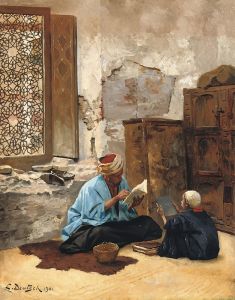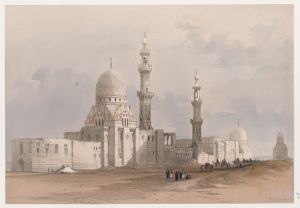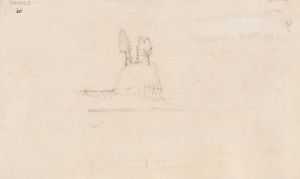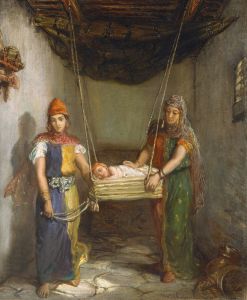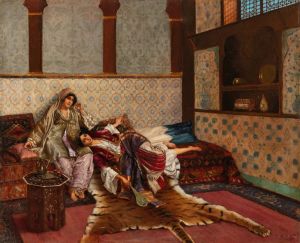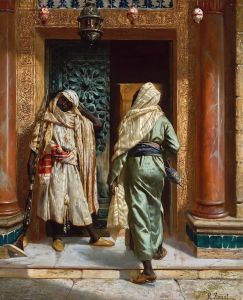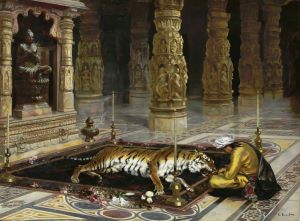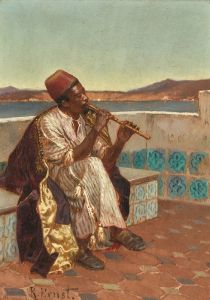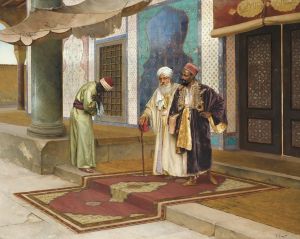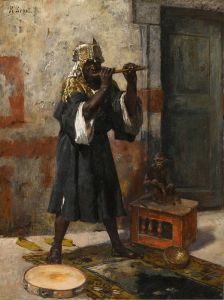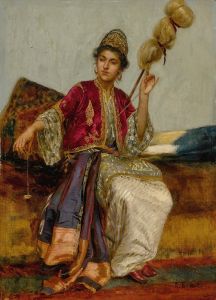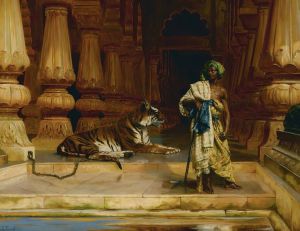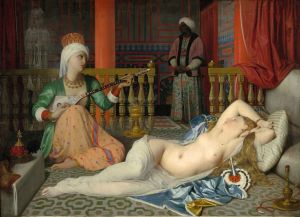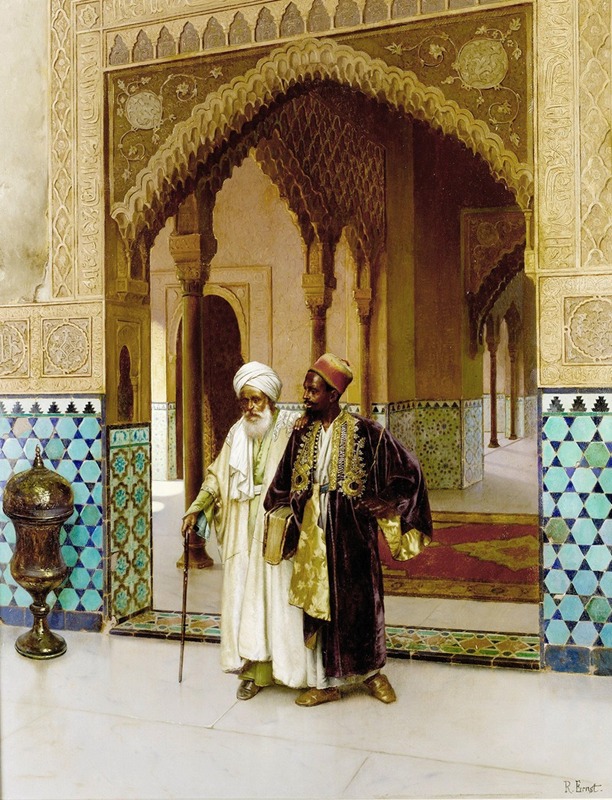
After Prayers
A hand-painted replica of Rudolf Ernst’s masterpiece After Prayers, meticulously crafted by professional artists to capture the true essence of the original. Each piece is created with museum-quality canvas and rare mineral pigments, carefully painted by experienced artists with delicate brushstrokes and rich, layered colors to perfectly recreate the texture of the original artwork. Unlike machine-printed reproductions, this hand-painted version brings the painting to life, infused with the artist’s emotions and skill in every stroke. Whether for personal collection or home decoration, it instantly elevates the artistic atmosphere of any space.
Rudolf Ernst was an Austrian painter known for his Orientalist works, which captured the fascination of Western audiences with the cultures and aesthetics of the Middle East and North Africa during the 19th and early 20th centuries. One of his notable paintings, "After Prayers," exemplifies his skill in depicting detailed and vibrant scenes inspired by these regions.
"After Prayers" is a painting that reflects Ernst's interest in the daily life and religious practices of the Islamic world. The painting typically portrays a serene and contemplative scene, often set in an interior space that suggests a mosque or a private prayer room. The composition usually includes figures engaged in quiet reflection or conversation following a period of prayer, capturing a moment of tranquility and spiritual introspection.
Ernst's work is characterized by meticulous attention to detail and a rich use of color, which are evident in "After Prayers." The artist's background in academic painting is apparent in his precise rendering of architectural elements, textiles, and decorative motifs. These details not only enhance the visual appeal of the painting but also serve to create an immersive atmosphere that transports the viewer to the setting depicted.
The Orientalist movement, of which Ernst was a part, often romanticized and exoticized the cultures it portrayed. While this approach has been critiqued for its colonialist undertones and lack of authenticity, it also reflects the period's fascination with the "exotic" East. Ernst, like many of his contemporaries, was influenced by the travels and writings of explorers and scholars who documented their experiences in the Islamic world. Although it is unclear whether Ernst himself traveled extensively in the regions he painted, his works demonstrate a keen interest in and respect for the subjects he depicted.
"After Prayers" is a testament to Ernst's ability to capture the essence of a moment through his art. The painting invites viewers to appreciate the beauty and serenity of the scene, while also prompting reflection on the cultural and historical context in which it was created. Ernst's work remains a valuable part of the Orientalist canon, offering insights into the Western perception of the East during his time.
Today, "After Prayers" and other works by Rudolf Ernst can be found in various private collections and museums, where they continue to be appreciated for their artistic merit and historical significance. As with many Orientalist paintings, they serve as a reminder of the complex interplay between art, culture, and history, and the ways in which artists have sought to represent the world around them.





